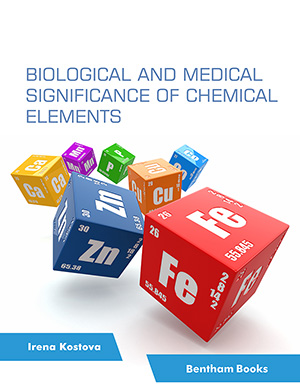Abstract
Background: A thin membrane capsule covers the eye lens and links the lens and the applied forces by the ciliary muscles. The capsule converts the tension of the concentrated zonules to distributed surface tractions over the cortex surface during the lens accommodation. The gradual changes of the capsule geometry and material properties with age and its important role in the design of intraocular lens implants were the motivation of extensive researches on describing the capsule biomechanical behavior.
Aims: The present work aimed to study the lens accommodation response to different capsule thicknesses and material properties at different ages.
Materials and Methods: A material and geometry parametric study was performed, drawing some guidelines on the choice of lens capsule thickness and biaxial/uniaxial material parameters and exploring the response sensitivity of the finite element model at different age groups.
Results: The 16-, 35- and 48-year-old lenses were considered for lens accommodation simulation. The sensitivity of lens accommodation was studied at each age group by considering constant thickness (cnst-t) and variable thickness (var-t) capsules and biaxial (Biax) and uniaxial (Uniax) material characteristics tests. The lens was stretched through zonules, and corresponding absolute changes in central optical power (COP) were measured.
Conclusion: After the stretch, the lens anterior and posterior curvatures increased, producing a change in COP. The Biax models underestimated the ΔCOP compared to the Uniax models. The 16-year lens model was more sensitive to material properties than thickness variation, while thickness variation was more relevant to the ΔCOP of the 35-year lens model. The 48-year model had the least sensitivity to capsule thickness and material property variations.
Keywords: Human lens capsule, accommodation, strain, finite element analysis, sensitivity analysis, biconvex.
[http://dx.doi.org/10.1111/opo.12244] [PMID: 26353999]
[http://dx.doi.org/10.1016/j.preteyeres.2017.04.001] [PMID: 28411123]
[http://dx.doi.org/10.1016/j.jcrs.2014.07.028] [PMID: 25661140]
[http://dx.doi.org/10.1113/jphysiol.1969.sp008739]
[http://dx.doi.org/10.1016/j.exer.2004.05.014] [PMID: 15336496]
[http://dx.doi.org/10.1016/j.visres.2007.03.014] [PMID: 17467027]
[http://dx.doi.org/10.1016/S0886-3350(99)80051-0] [PMID: 10198859]
[http://dx.doi.org/10.1001/archopht.1991.01080050056028] [PMID: 2025165]
[http://dx.doi.org/10.1001/archopht.1996.01100140312010] [PMID: 8790098]
[http://dx.doi.org/10.1016/S1091-8531(99)70045-5] [PMID: 10613580]
[http://dx.doi.org/10.1016/j.jcrs.2006.04.007] [PMID: 16863977]
[http://dx.doi.org/10.1016/S1350-9462(03)00063-6]
[http://dx.doi.org/10.1167/iovs.02-0096]
[http://dx.doi.org/10.17116/oftalma201513164-10] [PMID: 26977720]
[http://dx.doi.org/10.1006/exer.1996.0030] [PMID: 8690034]
[http://dx.doi.org/10.1115/1.2401188]
[http://dx.doi.org/10.1080/10255840601154750] [PMID: 17558651]
[http://dx.doi.org/10.1115/1.2401192]
[http://dx.doi.org/10.1016/j.jbiomech.2005.04.019] [PMID: 16024027]
[http://dx.doi.org/10.1007/s10237-005-0073-z] [PMID: 15973538]
[http://dx.doi.org/10.1167/iovs.05-1002] [PMID: 16639015]
[http://dx.doi.org/10.1038/srep31171] [PMID: 27507665]
[http://dx.doi.org/10.1364/JOSAA.36.00B116] [PMID: 31044989]
[http://dx.doi.org/10.1109/TBME.2019.2927390] [PMID: 31395531]
[http://dx.doi.org/10.1007/s12572-015-0141-2]
[PMID: 30439450]
[http://dx.doi.org/10.1038/s41598-017-16854-9] [PMID: 29192148]
[http://dx.doi.org/10.1113/jphysiol.1969.sp008740] [PMID: 5775812]
[http://dx.doi.org/10.1016/j.jcrs.2010.09.001] [PMID: 21029906]
[http://dx.doi.org/10.1016/S0042-6989(02)00094-9] [PMID: 12207982]
[http://dx.doi.org/10.1016/j.visres.2006.04.012] [PMID: 16750240]
[http://dx.doi.org/10.1080/10255842.2016.1228907] [PMID: 27609339]
[http://dx.doi.org/10.1113/jphysiol.1969.sp008739] [PMID: 5773553]
[http://dx.doi.org/10.1016/j.visres.2005.05.030] [PMID: 16102799]
[http://dx.doi.org/10.1167/7.11.1] [PMID: 17997656]
[http://dx.doi.org/10.1007/s10237-008-0130-5] [PMID: 18622755]
[http://dx.doi.org/10.1007/s00417-016-3296-z] [PMID: 26916782]
[http://dx.doi.org/10.1007/s10237-015-0680-2] [PMID: 25957261]
[http://dx.doi.org/10.1016/j.exer.2017.02.004] [PMID: 28202286]
[http://dx.doi.org/10.1016/j.exer.2010.10.010] [PMID: 21040722]
[http://dx.doi.org/10.1016/j.exer.2012.01.011] [PMID: 22326492]
[http://dx.doi.org/10.1016/j.visres.2010.03.012] [PMID: 20338192]
[http://dx.doi.org/10.1167/iovs.12-10847] [PMID: 23745005]
[http://dx.doi.org/10.1167/11.3.19] [PMID: 21441300]
[http://dx.doi.org/10.1364/BOE.8.000918] [PMID: 28270993]
[http://dx.doi.org/10.1242/jcs.112.13.2155] [PMID: 10362545]
[http://dx.doi.org/10.1016/j.visres.2004.07.032] [PMID: 15571742]
[http://dx.doi.org/10.1016/j.visres.2005.10.019] [PMID: 16321421]
[http://dx.doi.org/10.1113/jphysiol.1971.sp009315] [PMID: 5101807]
[http://dx.doi.org/10.1088/1475-4878/30/3/301]
[http://dx.doi.org/10.1016/j.exer.2017.12.008] [PMID: 29288023]
[http://dx.doi.org/10.1007/s00417-011-1617-9] [PMID: 21287191]
[http://dx.doi.org/10.1016/j.preteyeres.2018.09.004] [PMID: 30244049]
[http://dx.doi.org/10.1038/srep25551] [PMID: 27151778]
[http://dx.doi.org/10.1016/j.jcrs.2008.11.066] [PMID: 19393898]
[http://dx.doi.org/10.1097/j.jcrs.0000000000000447] [PMID: 32991502]
[http://dx.doi.org/10.1016/S0002-9394(14)71133-X] [PMID: 9535628]
[http://dx.doi.org/10.1111/j.1463-5224.2006.00506.x] [PMID: 16939454]































